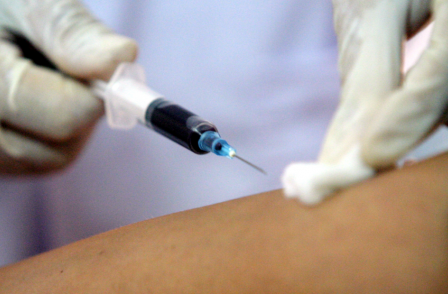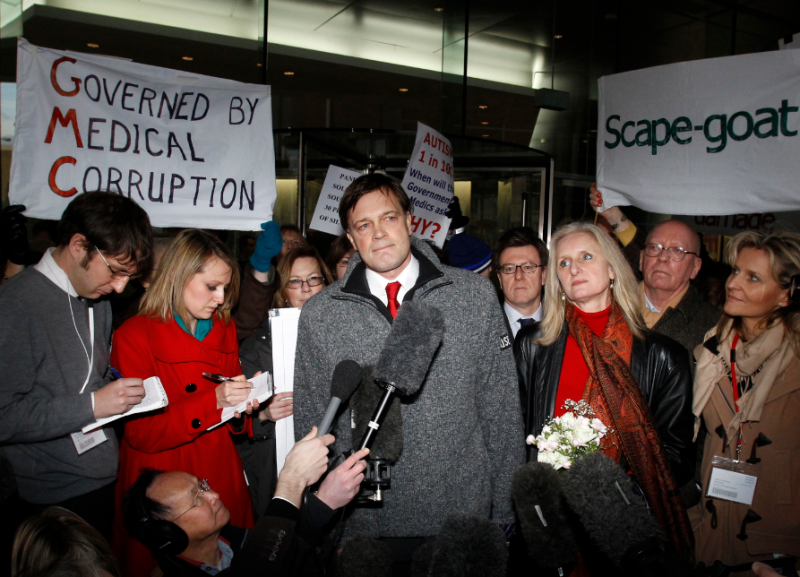
‘Balance’ is billed as the hallmark of good journalism, a fair way of telling both sides of a story, a means of being objective and preventing bias. The BBC Charter and editorial guidelines, for example, emphasise the importance of “due impartiality”.
Balance can work well in straightforward stories: a government minister and their shadow can be given equal time or space to state opposing views; a residents’ association can speak out against a radical council plan.
But balance in medical and science stories can distort research, generate bogus controversy and result in groundless fear and false hope. It can even contribute to deaths.
Remarkably, ‘balance’ is rarely discussed in public forums – and when it is, it is not because of scientific considerations.
For example, in July this year Cabinet ministers were widely reported as insisting that the BBC “can’t be impartial” about terrorists”. Chris Grayling, leader of the Commons, insisted that the broadcaster should not seek to be any more balanced towards Isis than it was towards the Nazis.
This raises an intriguing question. Which stories/ topics merit balance and which do not?
Dr Edzard Ernst, formerly Britain’s first professor of complementary medicine at the University of Exeter, says: “Imagine that National Geographic were to publish an article ‘balancing’ existing scientific knowledge by presenting the opinions of the Flat Earth Society. Who would take it seriously? Yet we regularly accept the equivalent when discussing homeopathy.”
His point was that the scientific evidence against homeopathy is as robust as that stating the world is flat. There is no scientific rationale for assuming that homoeopathic remedies – which are devoid of pharmacologically active molecules – can produce clinical effects.
The science in unequivocal. Any benefits of homoeopathy must be restricted to placebo.
Yet if I were doing a piece about the science of homeopathy, convention would demand that I balance the story. A homeopath would probably steadfastly insist that science didn’t know everything and that he had hundreds if not thousands of satisfied patients.
In this all too familiar scenario a lone maverick may be given equal time or space as as a heavily peer-reviewed researcher representing international scientific consensus. Such concessions to mavericks create a misleading idea that there is an ongoing scientific debate between two ideas of equal weight. In this instance, as in many, there would be no debate to be had.
The quest for “balance” is incompatible in a world where there there have been more advances in medical scientific knowledge in the last 50 years than in the previous 2,000 – since the era of Hippocrates.
We are living through a head-on collision between two of the biggest drivers in contemporary life – science and preoccupation with risk. Previous generations did not ask, do cell/mobile phones cause cancer? Does living near high-voltage power lines threaten health? Should people take aspirin to avoid heart attacks? Should we vaccinate our children?
Such questions stimulate legitimate public debate, but they also foment scares that, in turn, discourage healthcare professionals from working with the media.
Alas, sidestepping media questions for fear that they may exacerbate public alarm may have the opposite effect, opening up the ground to commercial interests who exploit fear for profit; and to pressure groups who disseminate misleading information.
Whereas pressure groups, such as the anti-vaccination lobby, are vociferous, many healthcare professionals are the very opposite. This does not help in a world where the media may react to those who shout loudest. Rather, it encourages imbalance of the worst possible kind, resulting ironically from genuine attemps to achieve balance.

Andrew Wakefield, credit: Reuters
The MMR (measles, mumps, rubella) vaccine story is perhaps the most infamous example of journalistic imbalance. It began in 1998 with the publication in The Lancet medical journal of a later discredited report linking the vaccine to bowel disease and autism. Investigations by Brian Deer of the Sunday Times later revealed that Dr Andrew Wakefield (pictured above), the first author of The Lancet report, had undeclared conflicts of interest. In May 2010 the General Medical Council found Wakefield guilty of serious professional misconduct. He was struck off the Medical Register.
Wakefield’s widely reported claims led to a sharp fall in vaccination rates and a significant increase in incidence of measles and mumps, resulting in deaths and severe and permanent injuries. It is easy to see so many parents decided against vaccination. Ironically, because of the success of vaccination, few young parents will have seen a case of measles. Even fewer may know that it can lead to pneumonia, seizures and even inflammation of the brain.
This was another example of the media giving undue prominence to a lone maverick at the expense of scientific consensus. In 1998 Wakefield was genuine news. The Royal Free Hospital, where he was based, even called a press conference about his research. But he continued to make news even after his research had been discredited. The story just ran and ran.
In her book, Health, Risk and News: The MMR Vaccine and The Media, Tammy Boyce says that by 2002 the established practice in articles was for journalists to include both the idea that MMR was safe and that “it might not be safe”.
Yet in I998, after publication of the original Lancet report, a Medical Research Council working party concluded that there was no evidence to indicate any link between the vaccine and bowel disease or autism in children.
The following month a 14-year study by Finnish scientists reported that out of three million vaccinated children, 31 children had gastrointestinal side effects within 15 days. But their symptoms generally lasted more than a week, with the exception of one child who had diarrhea for six weeks. In 2001 a London based study pooling all published MMR research also gave the vaccine the all clear.
What this suggests is that the media attach more importance to presenting both sides of a story, however implausible one side may be, than accurately reporting scientific evidence. This led to a bizarre situation in which the Department of Health took what might have been an unprecedented move. Rather than actively promoting the benefits of MMR, it kept below the media parapet, knowing that reporters would balance any Department press statement with a statement from Wakefield or the strident anti-MMR lobby. Their research showed that any coverage about MMR, good or bad, resulted in a decline in vaccination levels. This alone underlines why journalism needs to re-think balance.
Do we really want to provoke pseudo controversy and panic parents into denying their children life-saving interventions. The MMR vaccine, like any other, is not risk-free, but the evidence that the benefits outweigh the risks is overwhelming.
Some scientists have maintained that the MMR story should not have been published at all. There is much to commend this idea because The Lancet finally retracted the original paper in 2010.
But if I had been a national newspaper medical correspondent in 1998, I would have covered it – after all this was a report in one of the world’s leading medical journals based on research at one of the world’s leading teaching hospitals.
In deciding what to what not to report journalists must continue to rely on news values such as novelty, universality, topicality, impact and controversy. I have often reported stories – haven’t we all – that I didn’t believe in and have relied, as far as possible, on balance to create a rounded picture. For example, I plead guilty to reporting unmitigated rubbish about Prince Charles and his belief in alternative medicine.

I first questioned traditional notions about balance while writing a piece for The Sunday Times. This showed that balance can also decimate non-scientific stories – in a totally different way. It was about a man who had set himself up as a Harley Street “psychotherapist” after running a marriage bureau and social club.
He was completely untrained, but within the law. Anyone in Britain could call themselves a psychotherapist (and still can) despite evidence that unqualified practitioners could cause significant harm. He claimed to be able to help people suffering from stress, tension and depression. He was even asked to deal with sexual problems.
Yet the “story” had to be balanced. I quoted him as saying that the mistake many psychiatrists made was that they “treated the field as 100 per cent science” when you needed “an intuitive feeling”. He added: “No exams, no degrees can show if you’ve got that or not. “The story was further “balanced” by legal advice, meaning that we had to describe him as “a reputable therapist”.
The following week he called to thank me. He said that he had been inundated by calls from new clients who had read about him in The Sunday Times. Balance had demolished my hatchet job.
Of course the right kind of journalistic balance is essential.
The late American astronomer and author Carl Sagan called upon science journalists to balance their genuine sense of wonder about apparently remarkable new developments with old-fashioned skepticism. This need is as great as ever.
In 1994, Professor Doug Altman, one of the world’s leading medical statisticians estimated that only one per cent of medical research was free from flaws.
In 2009 Sir Iain Chalmers, an internationally acclaimed Oxford based researcher and his Australian colleague, Professor Paul Glasziou estimated as much as 85 per cent of research investment was wasted.
In 2014 a supplement in The Lancet medical journal raised similar concerns. But gee-whiz science reporting eclipses skepticism.
Headlines such as “Cancer therapy offers hope” and “New drug breakthrough for MS” sometimes make it hard to distinguish journalism from advertising. Long live balance – of the Sagan kind. Reporters should also think more about weighting information than balancing it.
This article first appeared in the British Journalism Review and won the 2016 Medical Journalists’ Association award for “Feature of the Year for a specialist audience. It was extracted from John Illman’s new book, Handling the media: communication and presentation skills for healthcare professionals. JIC Books, £14.99. Available from https://www.jicmedia.org/shop/
John Illman is a former editor of GP who spent five years on the Daily Mail as medical correspondent, eight years as health editor on The Guardian and three years as medical correspondent on The Observer.
Email pged@pressgazette.co.uk to point out mistakes, provide story tips or send in a letter for publication on our "Letters Page" blog
